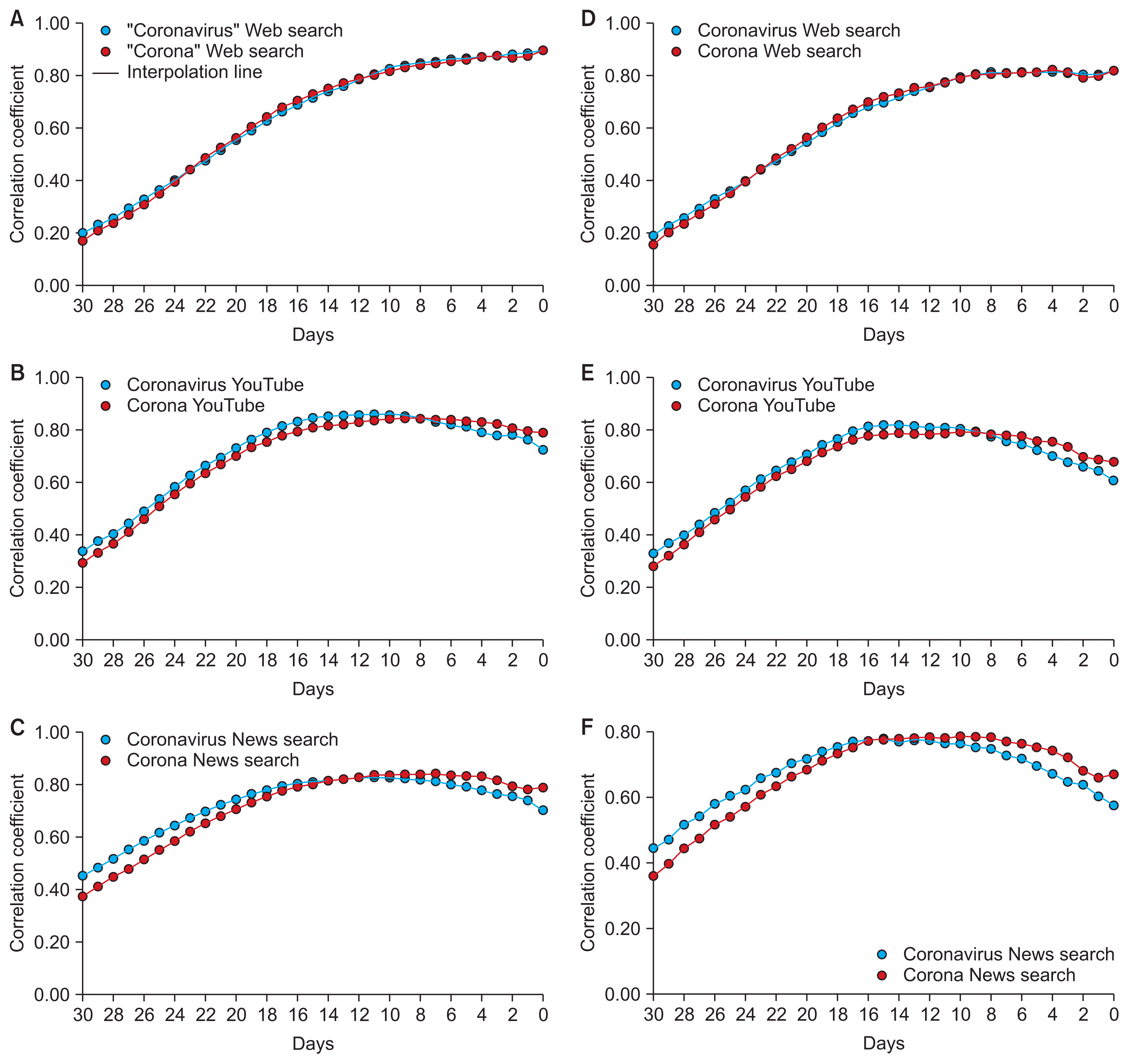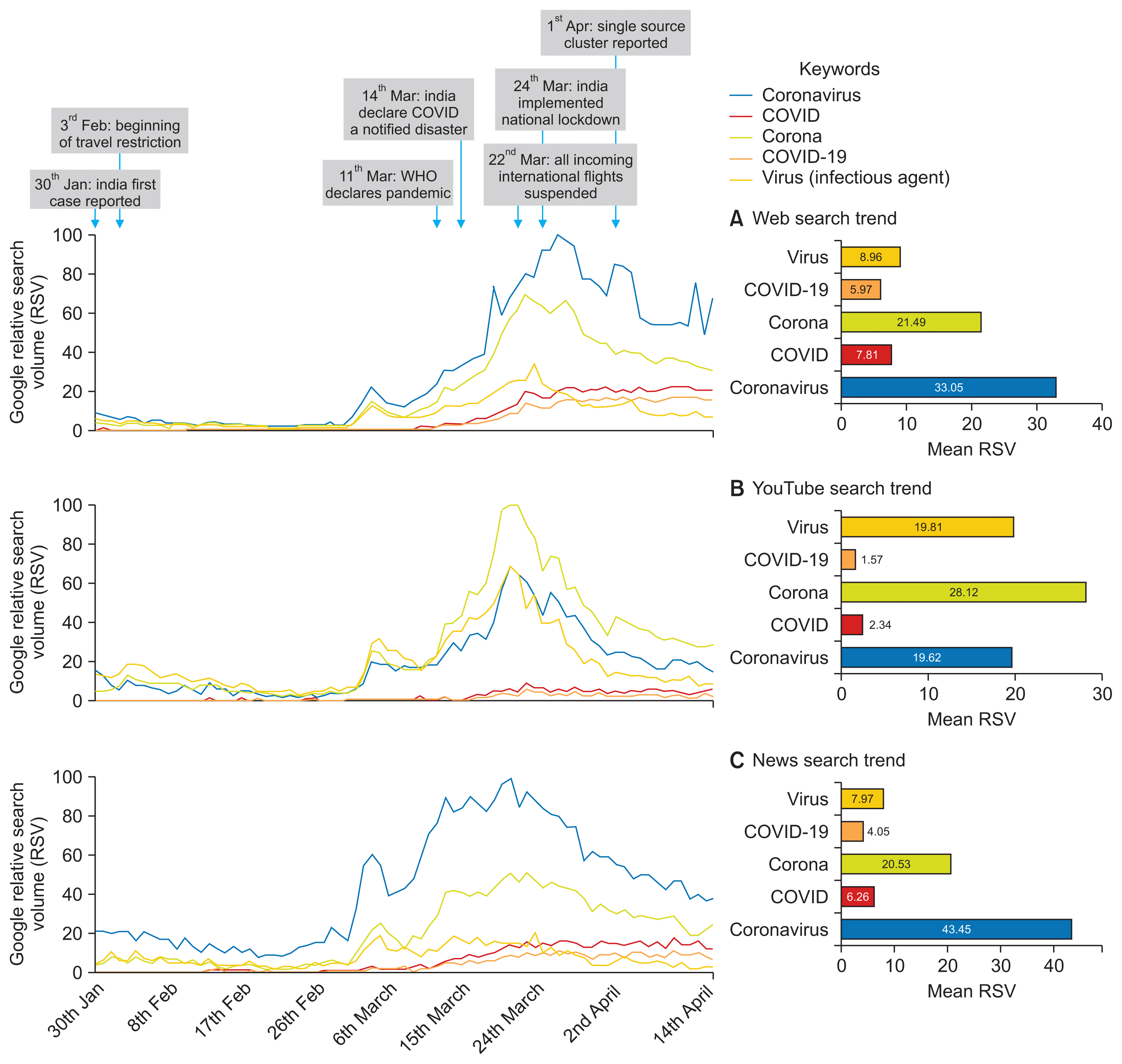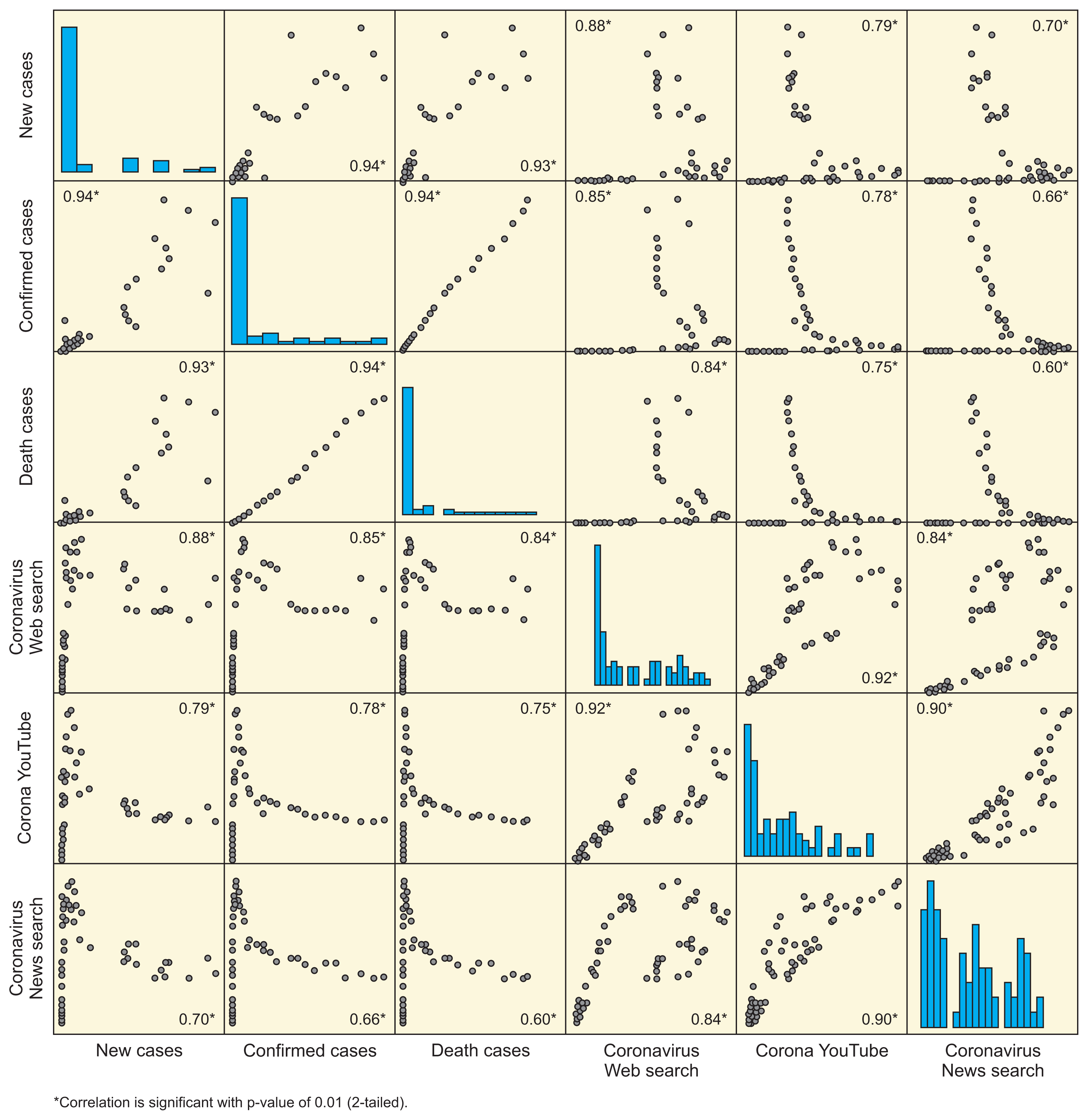4. Seo DW, Jo MW, Sohn CH, Shin SY, Lee J, Yu M, et al. Cumulative query method for influenza surveillance using search engine data. J Med Internet Res. 2014; 16(12):e289.

5. Shin SY, Seo DW, An J, Kwak H, Kim SH, Gwack J, et al. High correlation of Middle East respiratory syndrome spread with Google search and Twitter trends in Korea. Sci Rep. 2016; 6:32920.

6. Verma M, Kishore K, Kumar M, Sondh AR, Aggarwal G, Kathirvel S. Google Search Trends predicting disease outbreaks: an analysis from India. Healthc Inform Res. 2018; 24(4):300–8.

7. Yuan Q, Nsoesie EO, Lv B, Peng G, Chunara R, Brownstein JS. Monitoring influenza epidemics in china with search query from baidu. PLoS One. 2013; 8(5):e64323.

11. Seo DW, Shin SY. Methods using social media and search queries to predict infectious disease outbreaks. Healthc Inform Res. 2017; 23(4):343–8.

13. Ginsberg J, Mohebbi MH, Patel RS, Brammer L, Smolinski MS, Brilliant L. Detecting influenza epidemics using search engine query data. Nature. 2009; 457(7232):1012–4.

14. Li C, Chen LJ, Chen X, Zhang M, Pang CP, Chen H. Retrospective analysis of the possibility of predicting the COVID-19 outbreak from Internet searches and social media data, China, 2020. Euro Surveill. 2020; 25(10):2000199.

15. Carneiro HA, Mylonakis E. Google Trends: a web-based tool for real-time surveillance of disease outbreaks. Clin Infect Dis. 2009; 49(10):1557–64.

17. Woo H, Cho Y, Shim E, Lee JK, Lee CG, Kim SH. Estimating influenza outbreaks using both search engine query data and social media data in South Korea. J Med Internet Res. 2016; 18(7):e177.

18. Chatterjee K, Chatterjee K, Kumar A, Shankar S. Healthcare impact of COVID-19 epidemic in India: a stochastic mathematical model. Version 2. Med J Armed Forces India. 2020; 76(2):147–55.
19. Santangelo OE, Provenzano S, Piazza D, Giordano D, Calamusa G, Firenze A. Digital epidemiology: assessment of measles infection through Google Trends mechanism in Italy. Ann Ig. 2019; 31(4):385–91.
20. Provenzano S, Santangelo OE, Giordano D, Alagna E, Piazza D, Genovese D, et al. Predicting disease outbreaks: evaluating measles infection with Wikipedia Trends. Recenti Prog Med. 2019; 110:292–6.
21. Wilson N, Mason K, Tobias M, Peacey M, Huang QS, Baker M. Interpreting Google flu trends data for pandemic H1N1 influenza: the New Zealand experience. Euro Surveill. 2009; 14(44):19386.

22. Lin YH, Liu CH, Chiu YC. Google searches for the keywords of "wash hands" predict the speed of national spread of COVID-19 outbreak among 21 countries. Brain Behav Immun. 2020; 87:30–2.

23. Nuti SV, Wayda B, Ranasinghe I, Wang S, Dreyer RP, Chen SI, et al. The use of Google Trends in health care research: a systematic review. PLoS One. 2014; 9(10):e109583.

24. Cervellin G, Comelli I, Lippi G. Is Google Trends a reliable tool for digital epidemiology? Insights from different clinical settings. J Epidemiol Glob Health. 2017; 7(3):185–9.






 PDF
PDF Citation
Citation Print
Print





 XML Download
XML Download